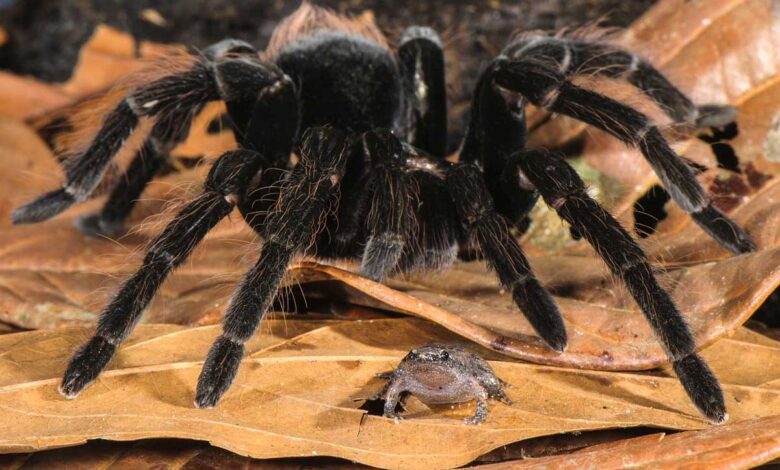
According to the findings of a new study, the reason tarantulas are furry is that when army ants (army ant) clean the nest of these animals in search of food, do not eat them alive. Army ants refer to more than 200 species of ants from different lineages that have predatory foraging groups.
The new study, published in the Journal of Natural History, offers several new ideas about tarantulas’ relationships with other species; including their surprisingly passive yet sometimes violent interactions with predator ants.
Predator ants or Marabonta They are known to prey on live spiders, but when foraging in the underground nest of a South American tarantula, these ants tended to ignore the adult tarantula as well as their offspring. On the rare occasion that ants attacked, the tarantulas’ stiff hairs provided adequate protection against the attackers.
Alireza Zamani“The dense hair covering the tarantula’s body makes it difficult for ants to bite or sting it,” study leader and arachnidist at the University of Turku, Finland, said in a statement. Therefore, we believe that having hair may have evolved as a defense mechanism.”
Tarantula hair probably evolved as a defense mechanism
By reviewing previous scientific studies and gathering new field and social media observations, Zamani and his colleagues explored the complex relationships between tarantulas and other animals.
The researchers found that army ants help fossorial tarantulas (which live in underground burrows) by removing old food from their nests. However, the spiders still needed protection so that the ants could not bite them. The hair defense hypothesis is supported by previous studies showing that nesting tarantulas cover their egg sacs in hair to prevent ants from damaging the eggs.
In addition, the research team discovered that less furry and potentially more vulnerable arboreal tarantulas, including Avicularia hirschii s. (Avicularia hirschii) In Peru, they have developed different defense strategies against ants. For example, in one observation, the researchers found that avicularia hang from the tip of a leaf to escape ants hunting for prey.

Photographer: Emanuele Biggi
Although tarantula-ant relations can be strained, researchers have found that tarantulas enjoy more friendly interactions with the amphibians that sometimes live in their underground burrows. The study described more than 60 partnerships between tarantulas and amphibians in 10 different countries, as well as relationships with snakes and other spiders.
“Apparently, frogs and toads living in tarantula lairs benefit from shelter and protection from predators,” Zamani said. “In return, the frogs and toads feed on insects that may be harmful to the tarantula, its eggs and young.”









